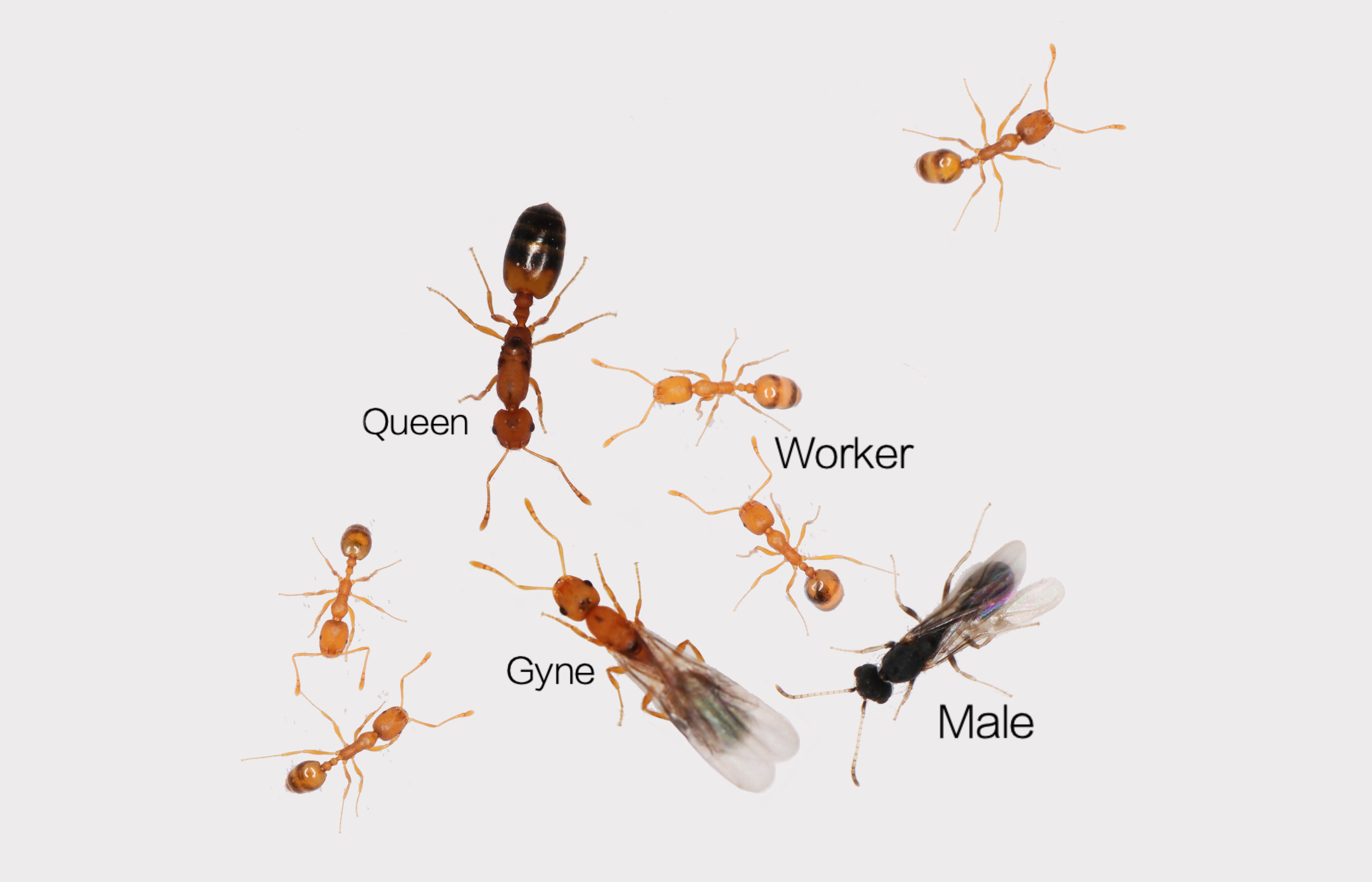Yet, this order and hierarchy is sometimes broken. Raider ants are one species where ‘fake’ queen ants occur; they mimic an ant queen by eating the food, but don’t forage and when they reproduce they only hatch more imposters rather than worker ants. In a fascinating Rockefeller University-led research paper published earlier this year, scientists have discovered a "supergene" responsible for transforming raider ants into these parasitic impostor queens.
This latest study added one more building block to the understanding of ants, a species that global scientists have been studying for a long time. In June 2022, international researchers led by BGI-Research successfully applied BGI DNBeLab single-cell library platform to obtain more than 200,000 single-nucleus transcriptomes from the brains of all adult phenotypes of pharaoh ant - workers, males, gynes (virgin queens), and queens, and from which they constructed a comprehensive single-cell atlas.
 Four types of pharaoh ant
Four types of pharaoh ant
The team’s discovery suggests that functional specialization of their brains appears to be a mechanism underlying the social task division among individual ants within a colony. Ant colonies have been conceptualized as superorganisms for more than a century.
The single-cell technology, specifically the DNBeLab single cell library platform, has played a crucial role in understanding the complexity of ant brains. This massively parallel single-cell profiling technology offers high sensitivity and accuracy at a low cost, allowing scientists to systematically determine cellular complexity in ants' brains and assess the differences in brain cell composition between individuals within the same colony. The technology has the potential to further unravel the mysteries of various biological processes and phenomena, extending its applications beyond ants and into other organisms.
While human beings have to be trained for different jobs, ants are born with a specific role in their colony. The later study of raider ants echoes this finding in a very interesting way. Raider ants don’t typically have queens, but a “supergene” turns them into freeloaders just like queens in other species. Unlike in human society where it takes a lot to rise to the top, ants only need one “supergene” to become the “boss”!
Rockefeller University-led research on the "supergene" in raider ants and the BGI-Research-led study on ant brains both emphasize the crucial role of genomics research in understanding this complex creature. By exploring the genetic mechanisms behind their unique caste systems and specialized brain functions, scientists can gain valuable insights into the superorganismal life strategy that has allowed ants to thrive for over 140 million years. This knowledge not only deepens our understanding of ant society but also demonstrates the potential of genomics research in exploring the intricacies of various biological processes and phenomena.
This groundbreaking research not only sheds light on the inner workings of ant society but also paves the way for a deeper understanding of other social organisms and the potential applications of single-cell technology in diverse fields.
With the discovery of the parasitic queen mystery and the revelations about ant brain complexity, we are one step closer to understanding the intricate dynamics of ant societies and their incredible success as superorganisms.



